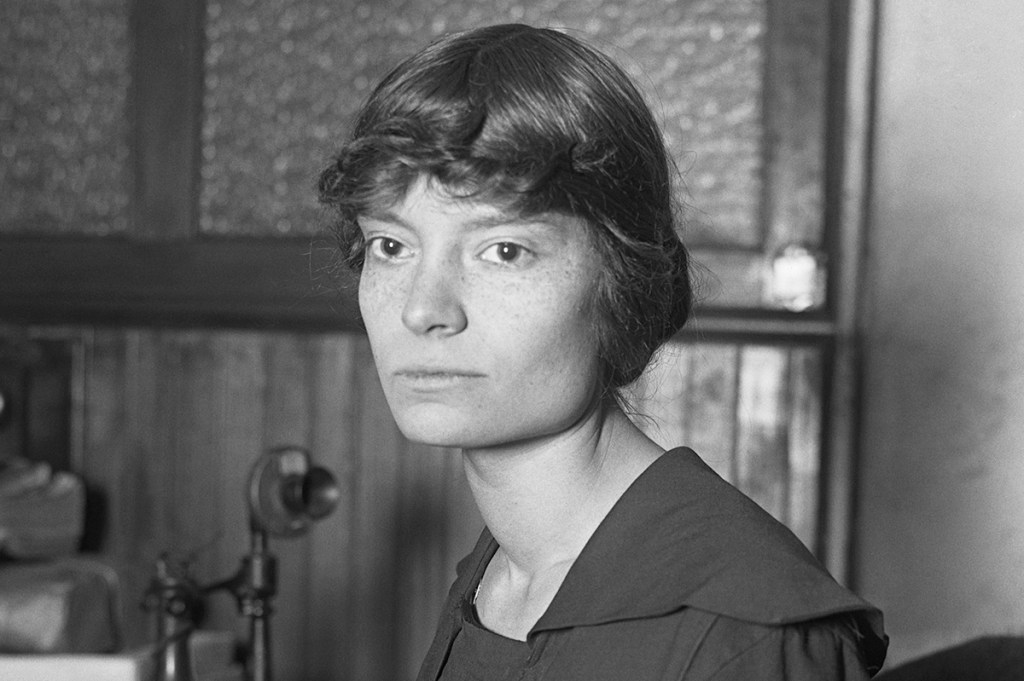Dorothy Day showed up at Kings County Hospital one day during the Spanish influenza outbreak of 1918, after ‘the tragic aspect of life in general began to overwhelm [her]’ (she was 21 at the time). Though she was a college dropout journalist and barfly with no medical training, she was conscripted into a sort of apprenticeship. She became a nurse by nursing.
The girls worked daily shifts of 10 hours’ nursing punctuated by two-hour lessons for the uncredentialed. The hospital wanted as many nurses on the floor as they could get: it was a pandemic, after all. She later wrote about this time in her memoir, The Long Loneliness: ‘The wards were filled and the halls too. Many of the nurses became ill and we were very short-handed. Every night before going off duty there were bodies to be wrapped in sheets and wheeled away to the morgue.’ Staff in the same hospital 102 years later might report a similar experience, though many of the rest of us have been busy Zooming in our PJs.
Much as I’d like to canonize every frontline worker in this present pandemic, we mostly have to settle for thanking them in Burger King commercials. The current cause for Dorothy to become an officially recognized saint in the Roman Catholic Church, which is expected to be submitted to the Congregation for the Causes of Saints in Rome this summer, doesn’t have much to do with her harrowing year on the flu ward. In fact, that experience takes up just six pages in her 284-page memoir — slightly less real estate than her first stint in jail.
But Dorothy’s extraordinary American life has an uncanny quality, with echoes of our own strange time reverberating in the pages of The Long Loneliness, from the front lines of the pandemic down to the 2020-era perfection of the title. As of this writing, it looks likely that the first months of 2021 will bring icy new waves of lockdowns, at least in some states. I suggest that if ‘the tragic aspect of life in general’ begins to overwhelm you, you consider replacing your fourth rewatch of The Queen’s Gambit with Dorothy’s memoir. Forty years after her death, she’s got a lot to say.
Dorothy spent a year caring for victims of Spanish influenza before returning to her old life of journalism, activism and late nights at the bar, but as a nurse she’d learned a secular discipline she called ‘the sacrament of duty’. She’d also started dropping by the hospital’s Catholic Mass on Sunday mornings. (A ‘packed’ service, she notes, deadly pandemic and all.) After the pandemic and the war both ended, she ran off to Europe a few times, with a few different men. She moved to Chicago to work for a communist newspaper in the early 1920s, where she was picked up in the Palmer Red Raids and jailed with prostitutes and drunks. She lived in New Orleans for a while, going to dance halls and eating shrimp and rice on her balcony in the French Quarter. In 1924 she moved back to New York, where an eventful life by any standard started to become world historic.
Dorothy’s conversion to Catholicism is famous for its messiness and its totality. Its messiness because in the decade between her casual Sunday-morning Masses at Kings County Hospital and her reception into the Church at age 30 lie an abortion, two suicide attempts and a failed relationship. Its totality because it cost her her career, her friends and the love of her life. In its wake, she found herself a single mom, unmoored from her community, beholden to an ideology she’d once rejected, but no less radical than she’d ever been.
How did it happen? After the ‘years of fret and strife, beauty and ugliness’ of her early twenties, Dorothy fell in love with an English anarchist named Forster Batterham. She found the happiness with Forster that she’d sought through the whole restless decade since she left school. The Staten Island seaside community where Dorothy and Forster lived together was populated with friendly working-class immigrants who lived off the land and the sea. Dorothy spent her days walking the beaches and rowing in the bay, she fished and clammed and learned to garden, she read Tolstoy and Dostoevsky by fire- light and fell asleep to the sound of the sea.
You may have to set aside some preconceived notions about Staten Island to appreciate that it was there that Dorothy found what she called ‘natural happiness’, culminating in the birth of her daughter, Tamar. Her daughter, her lover, her garden, the bay: suddenly all happiness in her life was rooted in the natural world, but she found she couldn’t account for it in the natural world alone. Day after day, she returned to the idea that her present, simple, earthly joy was a sign of a supernatural good. She found herself reading the Bible and learning the Catechism from a nun at the parish church so that she could have her daughter baptized a Catholic. Sister Aloysia couldn’t understand why Dorothy wouldn’t be baptized herself, and after a while, neither could Dorothy.
All this was a problem for Forster. He was so hardline that he objected to the birth of his own daughter on the anarchist grounds that it was wrong to bring children into a corrupt and violent world, and he steadfastly opposed the institution of marriage. Perhaps he would have found common cause with those 21st-century activists in Black Lives Matter and elsewhere, who favor the abolition of the nuclear family; certainly he was no less hostile to Dorothy’s new faith. So Dorothy knew what her conversion would mean for her relationship with him: ‘To become a Catholic meant for me to give up a mate with whom I was much in love… It was killing me to think of leaving him.’
Years after Forster refused to marry Dorothy, he had the temerity to ask her to nurse his new lover while she was ill, cementing his status as the original dirtbag leftist. (One shudders to think of the podcasts he would have released, had technology permitted.) Otherwise, Forster doesn’t figure much in the story of the next half-century of Dorothy’s action-packed life.
Dorothy and Tamar kicked around the continent for a while, screenwriting in Hollywood and hanging out with Diego Rivera in Mexico. Eventually they moved back to New York, this time to lower Chelsea. Dorothy started writing for the Jesuit magazine America and the liberal Catholic journal Commonweal, covering her old beat, labor and social justice. Then in 1932 a bearish French peasant named Peter Maurin turned up in her living room because ‘a red-headed Irish communist in Union Square told me to see you. He says we think alike’.
It turned out they did. They shared a radical vision for society based on the Sermon on the Mount: ‘Blessed are the poor in spirit.’ In 1933, Peter and Dorothy founded a newspaper called the Catholic Worker, to advocate for pacifism and social justice and to report on the labor movement and politics with a Gospel perspective. They sold 2,500 copies of the first issue in Union Square for a penny each. Within two years, its circulation was 150,000. Zealous young people volunteered to sell copies, and Dorothy got letters from readers all over the world about the serendipitous ways in which they found the paper: a laborer in Mexico found a copy under his flophouse mattress; a miner found one five miles underground in Nova Scotia; and a seminarian who sent his shoes to be soled in Rome had them returned wrapped in a copy of the paper.
But the Catholic Worker wasn’t just a paper: it was a movement. Dorothy and Peter shared a communitarian philosophy: that people are responsible for the love and care of one another, and that society thrives when it has healthy, self-supporting communities that are not beholden to the demands of capital — communities in which, as they put it, ‘It is easy to be good.’ This started with the staff themselves, who lived in voluntary poverty in community with one another and the poor.
By the end of the 1930s, Catholic Worker farms and houses of hospitality were established in major cities all over the country and in England and Australia. Dorothy published two books about her work. She was invited for a private audience with the Pope. She testified before Congress. Evelyn Waugh came to New York to see her: she declined his invitation to eat at the finest restaurant in the city and made him come to a trattoria in the West Village.
Even while she was gaining global renown for her work with the poor, Dorothy’s political activism was controversial. Her pacifism was absolute: just as she’d demonstrated against World War One in her youth, she opposed the Spanish Civil War, which upset other Catholics; World War Two, which upset everyone; then the atomic bomb, Korea and Vietnam. She protested against the draft. She protested against nuclear armament. She protested against Vatican II, leading a 10-day hunger strike at the age of 62 to demand that the Church denounce war. She visited picket lines all over the country, from striking autoworkers in Flint to the striking seamen at the docks in Manhattan. She even supported cemetery workers in a strike against the Archdiocese of New York. She was arrested every year between 1955 and 1961 because she refused to participate in mandatory civil defense drills, and she spent a total of 45 days in jail over that issue. The last time she was arrested was in 1973 and she was 75 years old, demonstrating with César Chávez in California for the rights of farmworkers. She spent two weeks in a prison farm.
But mostly she lived in the house of hospitality called Maryhouse on the Lower East Side, alongside the poor she served. She spent her days cooking and cleaning for them, paying bills, doing paperwork and writing. She died in her room in November 1980, when she was 83 years old. She’s buried in Staten Island. The Catholic Worker still publishes and still costs a penny a copy, and there are 240 active Catholic Worker communities today.
If Servant of God Dorothy Day, who has been publicly praised by Popes Benedict XVI and Francis as an exemplary American Catholic, does become recognized as Saint Dorothy in the next few years, I expect the same controversy that attended her life. To those American Catholics who see the Church as a subsidiary of the Republican party — who worship the free market most of all — the protesting might be a non-starter.
But her politics weren’t so easy to categorize, then or now. She opposed the New Deal and other sweeping federal initiatives on the grounds that charity, like the Incarnation itself, should be on a human scale. Charging into her own pandemic as she did, it’s not clear to me she would have favored lockdowns or mask mandates, in the vein of many contemporary liberals. Not to mention her social views: she was a pariah among her bohemian friends in the 1920s for advocating celibacy; imagine today’s pronoun police reading her rapturous reflections on the essential nature of womanhood.
Hospitals, protests, loneliness, more or less constant political conflict: Dorothy’s life, while extraordinary, feels familiar to us now. Whether she becomes a saint or not, it’s perhaps her steadfastness in the face of all this tumult that can teach us the most. When presented with no good options, politically, socially or civilly, she simply insisted on her own. Rather than bend to compromises or tawdry alliances with politicians, rather than yield one single inch of what it means to live as a Christian, she chose another way, and inspired thousands to join her. She still inspires now, if we are brave enough to listen.
This article was originally published in The Spectator’s January 2021 US edition.

























